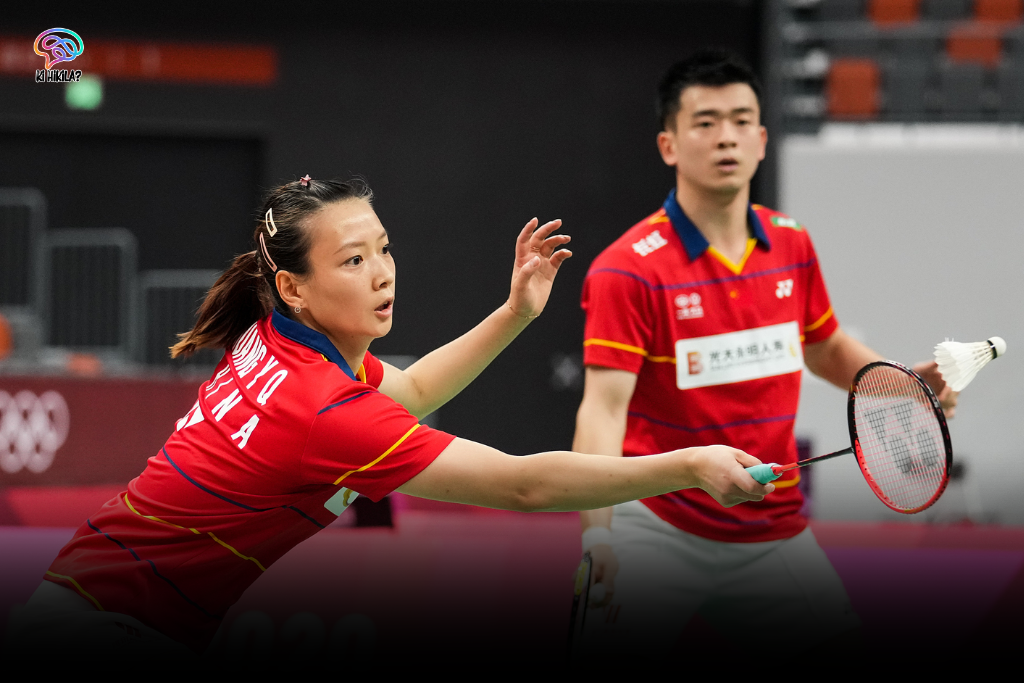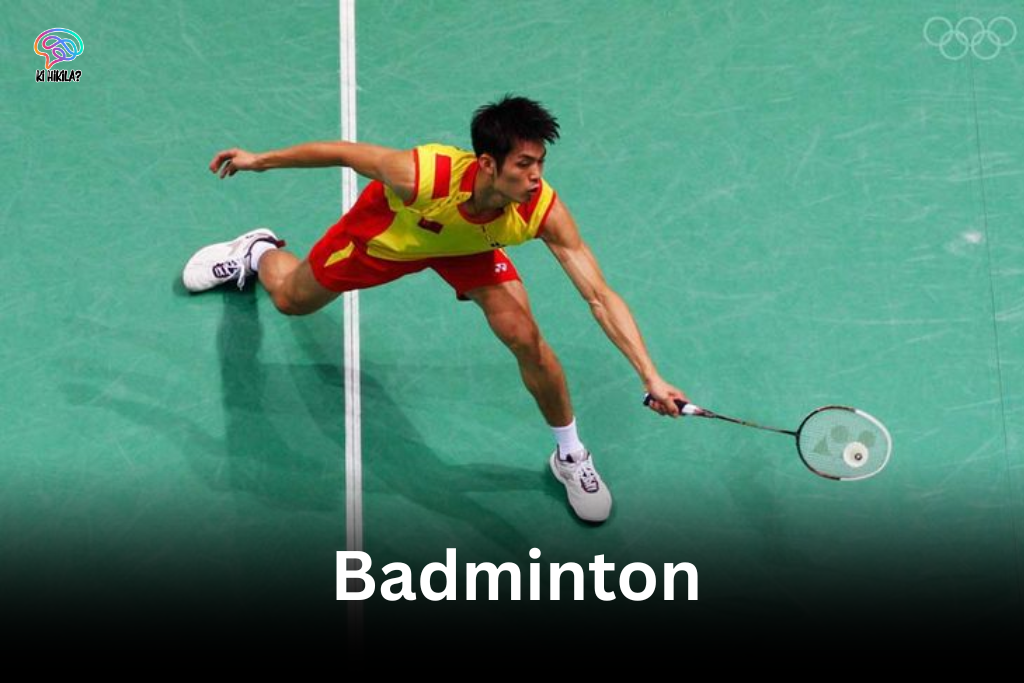Introduction
Badminton is a fast-paced racquet sport that demands lightning reflexes, strategic thinking, and exceptional fitness. Known for its thrilling rallies and feather-light shuttlecocks, the sport holds global popularity, especially in Asia and Europe. Its inclusion in the Olympic Games has amplified its reach and prestige, turning talented players into international icons. From high-speed smashes to breathtaking saves, badminton is an Olympic favorite among both fans and athletes.
History of Badminton in the Olympics
Badminton made its Olympic debut as a demonstration sport in 1972 and became a medal event at the 1992 Barcelona Games. At first, only men’s and women’s singles and doubles were included. Mixed doubles joined in 1996, making Badminton one of the few Olympic sports to feature mixed-gender events. Since then, nations like China, Indonesia, South Korea, and India have dominated the game with thrilling performances and unforgettable matches.
Importance of Badminton in the Olympic Games
The sport holds cultural and athletic significance in the Olympics. It showcases a blend of agility, stamina, strategy, and coordination, offering some of the fastest action among Olympic sports. Its popularity in densely populated nations like China and India brings millions of viewers and aspiring athletes. With equal events for men and women, and a mixed doubles format, it promotes gender equality, team unity, and international cooperation.
Game Rules and Playing Format
- Court Size: 13.4m x 6.1m (for doubles); singles play uses a narrower court.
- Scoring System: Best of 3 games. Each game goes up to 21 points. A player/team must win by 2 points (up to a max of 30).
- Serving Rules: The server must hit below the waist. Service rotates between sides after each rally won.
- Match Formats:
- Men’s Singles
- Women’s Singles
- Men’s Doubles
- Women’s Doubles
- Mixed Doubles
The game is played indoors with controlled lighting and airflow to ensure fair play.
Eligibility Criteria to Participate in the Olympics

- Age Limit: There’s no specific minimum or maximum age limit, though most athletes are between 18 to 35 years.
- Weight Categories: Not applicable.
- Gender Divisions: Separate categories for men, women, and mixed doubles.
- Qualification Criteria:
- Athletes must be ranked in the top positions of the BWF (Badminton World Federation) Olympic Qualification Rankings.
- Qualification is based on a 52-week period where players accumulate points from international events.
- Each National Olympic Committee (NOC) can send a limited number of athletes per category, usually based on rankings and continental quotas.
Equipment and Gear Used
- Racquet: Lightweight (70-100g) made of carbon fiber or graphite.
- Shuttlecock: Made of 16 goose feathers or synthetic materials; travels up to 400 km/h.
- Court Shoes: Non-marking soles with strong lateral grip.
- Apparel: Moisture-wicking shorts, skirts, and shirts designed for mobility.
- Optional Gear: Wristbands, headbands, ankle/knee support, and protective eyewear.
Training and Fitness Requirements
Olympic badminton athletes undergo rigorous physical and mental training, including:
- Agility drills and reflex training
- Strength conditioning for explosive jumps and smashes
- Endurance workouts (e.g., shuttle runs, HIIT)
- Mental focus and game strategy sessions
- Technical drills for strokes, footwork, and coordination
Players typically train 6 days a week, sometimes for 5–6 hours daily under the guidance of elite coaches.
Famous Olympic Athletes in Badminton
International Stars:
- Lin Dan (China) – 2-time Olympic Gold Medalist (2008, 2012)
- Lee Chong Wei (Malaysia) – 3-time Olympic Silver Medalist
- Carolina Marín (Spain) – Gold Medalist in Women’s Singles (2016)
Indian Champions:
- P.V. Sindhu – Silver (2016 Rio), Bronze (2020 Tokyo)
- Saina Nehwal – Bronze (2012 London)
- Kidambi Srikanth, Satwiksairaj Rankireddy & Chirag Shetty – Prominent names with top international rankings and championship wins
Medal Events and Country Performances
Total Olympic Medal Events in Badminton: 5
- Men’s Singles
- Women’s Singles
- Men’s Doubles
- Women’s Doubles
- Mixed Doubles
Dominating Nations:
- China – Most successful, with over 40 Olympic medals
- Indonesia – Consistent powerhouse in doubles
- South Korea & Denmark – Strong contenders
- India – Emerging global force, especially in singles
Future of Badminton in the Olympics
The sport continues to grow in popularity, with rising participation from athletes across continents. Efforts by the BWF to modernize the game—such as implementing rule changes, introducing instant review systems, and adopting broadcast-friendly formats—have enhanced its global appeal. The launch of new international tournaments and strengthened grassroots development programs further indicate a bright and promising future on the Olympic stage.
Badminton Players from Assam Shaping India’s Olympic Aspirations
Badminton in Assam has witnessed significant growth in recent years, with increasing representation at the national and international levels. The sport is governed in the state by the Badminton Association of Assam (BAA), which works in coordination with the Badminton Association of India (BAI). The Directorate of Sports & Youth Welfare, Government of Assam, actively supports grassroots programs, talent scouting, coaching camps, and competitive events to nurture young athletes.
A legendary name in Assam’s badminton history is Dipankar Bhattacharjee, the only badminton player from Assam to represent India at the Olympics. He competed in both the 1992 Barcelona Olympics and the 1996 Atlanta Olympics, marking a historic milestone for the state. He is also a three-time National Badminton Champion and two-time national runner-up, inspiring generations of players across the Northeast.
Recent talents such as Ashmita Chaliha, Ishaan Bhatnagar, and Tanvi Sharma have brought fresh recognition to the state, participating in events like the Asian Games, BWF International Series, and national championships. With strong institutional support and growing infrastructure, Assam continues to rise as a key contributor to India’s badminton landscape, offering hope to aspiring Olympians from the region.
Challenges and Potential of Badminton in Assam
Despite producing elite players like Dipankar Bhattacharjee and Ashmita Chaliha, badminton in Assam still faces several structural and developmental challenges. A major concern is the lack of dedicated indoor badminton academies with world-class facilities in many districts. Many talented players from rural and semi-urban areas lack access to professional coaching, nutrition support, and sports science infrastructure. There is also a shortage of certified coaches, advanced training modules, and international exposure for young athletes. While tournaments are organized regionally, Assam still needs regular high-level competitions and sponsorship opportunities to retain emerging talent within the state.
However, the potential is immense. Assam has a youth-rich demographic, growing interest in Olympic sports, and a deep passion for badminton in urban and semi-urban centers. With strategic investment in infrastructure, grassroots talent development, and government-backed scholarship schemes, Assam can become a badminton powerhouse in Northeast India. Collaborative efforts between the government, private sector, and national sports bodies can unlock this potential and produce future Olympians from the region.
Conclusion
Badminton, as an Olympic sport, continues to captivate audiences worldwide with its speed, precision, and intensity. Since its official inclusion in the 1992 Olympics, the sport has not only grown in global stature but has also become a platform for nations to showcase athletic excellence. For India—and especially Assam—badminton holds deep significance. From Dipankar Bhattacharjee, the only Assamese Olympian in badminton, to emerging talents like Ashmita Chaliha, the state has contributed notable athletes to the national stage.
Governed by the Badminton Association of Assam and supported by the Directorate of Sports & Youth Welfare, Assam has taken commendable steps to promote the sport. However, challenges such as limited infrastructure, lack of high-performance training centers, and insufficient competitive exposure continue to hinder many promising players. Despite these gaps, the state’s youth potential, cultural passion for sports, and increasing institutional support position Assam as a region with strong prospects for producing future Olympic-level shuttlers.
To truly harness this potential, sustained investments in coaching, infrastructure, and talent development are essential. With a focused approach and collaborative efforts, Assam can strengthen its presence on the national and international badminton map—empowering a new generation of champions who can carry forward the Olympic dream.
FAQs
Q1. What is the age limit to participate in Badminton at the Olympics?
There is no fixed age limit. However, most players qualify between the ages of 18–35 based on international performance.
Q2. How many players compete in a Badminton Olympic match?
Singles matches involve 2 players (1 vs 1), while doubles involve 4 players (2 vs 2).
Q3. How can someone from India qualify for Badminton in the Olympics?
Indian players must compete in BWF-sanctioned events and earn ranking points. Based on their position in the Olympic Qualification Ranking, top players are selected by the Badminton Association of India and Indian Olympic Association.
Q4. What are the events in Olympic Badminton?
Men’s Singles, Women’s Singles, Men’s Doubles, Women’s Doubles, and Mixed Doubles.
Q5. What is the scoring system used in Olympic Badminton?
Matches are played to the best of 3 games, each up to 21 points. A 2-point lead is required to win a game.



